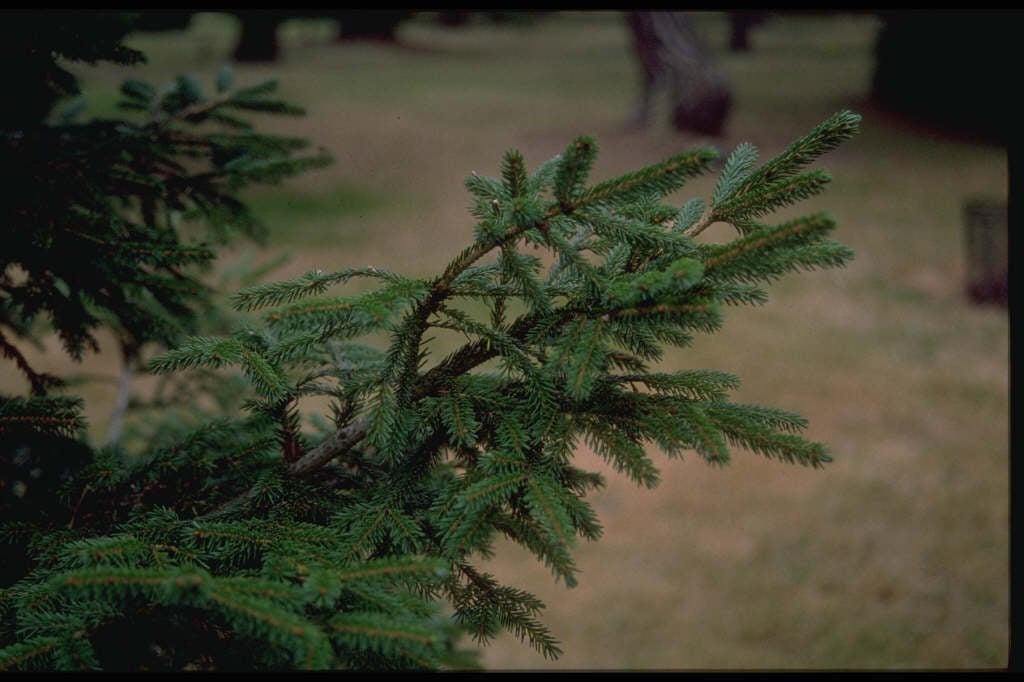Not the plant you're looking for? Search over 300,000 plants
ConifersTrees
Size
Ultimate height
Higher than 12 metresTime to ultimate height
20–50 yearsUltimate spread
4–8 metresGrowing conditions
Clay
Loam
Sand
Moisture
Moist but well–drainedpH
Acid, NeutralColour & scent
| Stem | Flower | Foliage | Fruit | |
| Spring | Green | |||
|---|---|---|---|---|
| Summer | Green | Purple | ||
| Autumn | Green | |||
| Winter | Green |
Position
- Full sun
Aspect
South–facing or East–facing or West–facing
Exposure
Exposed or Sheltered Hardiness
H7Botanical details
- Family
- Pinaceae
- Native to GB / Ireland
- No
- Foliage
- Evergreen
- Habit
- Bushy
- Genus
Picea are evergreen trees with rigid, needle-like leaves arranged singly all round the shoots, and narrow, leathery-scaled cones borne near the ends of the shoots
- Name status
Correct
- Plant range
- Caucasus, N Turkey
How to grow
Cultivation
Grow in moist but well-drained acidic soil. Shelter from cold drying winds. See conifer cultivation for more advice
Propagation
Propagate by grafting or semi-hardwood cuttings
Suggested planting locations and garden types
- Cottage and informal garden
- Architectural
- Low Maintenance
- Flower borders and beds
Pruning
No pruning required
Pests
May be susceptible to adelgids, red spider mite and conifer aphid
Diseases
May be susceptible to honey fungus
Get involved
The Royal Horticultural Society is the UK’s leading gardening charity. We aim to enrich everyone’s life through plants, and make the UK a greener and more beautiful place.
